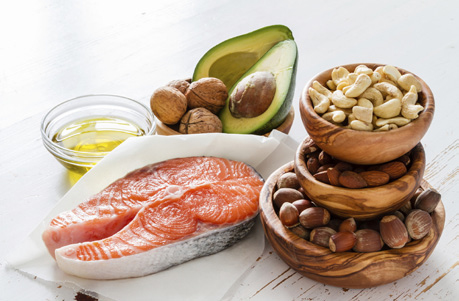No Longer the Bad Boy of Foods—How Fat Is Staging a Comeback
 In the 1980s and 1990s, one of the hottest food claims out there was “low-fat” or “fat-free.” Fat-free “butter” spray, skim milk and low-fat snack foods were in; real butter, whole fat dairy and red meat were out. From the American Heart Association to the U.S. Department of Agriculture, nutrition experts touted low-fat diets as the answer to smaller waistlines, lower cholesterol and longer lives. But as it turns out, they didn’t have the whole story. Now, more than two decades later, fat is making a comeback—in a big way.
In the 1980s and 1990s, one of the hottest food claims out there was “low-fat” or “fat-free.” Fat-free “butter” spray, skim milk and low-fat snack foods were in; real butter, whole fat dairy and red meat were out. From the American Heart Association to the U.S. Department of Agriculture, nutrition experts touted low-fat diets as the answer to smaller waistlines, lower cholesterol and longer lives. But as it turns out, they didn’t have the whole story. Now, more than two decades later, fat is making a comeback—in a big way.
Fat first got its negative reputation in the 1970s when a group of scientists made the correlation that in countries where people ate higher fat diets, there was a higher incidence of heart disease. They theorized that eating more fat increased the risk of heart attacks, high cholesterol and other cardiovascular problems. Everyone from the American Heart Association to the U.S. government took note and prescribed a lower-fat, higher carbohydrate diet for better health.
Fast forward 20 years and instead of seeing improvements in heart disease, health experts saw little change—other than our waistlines getting bigger. Investigating the cause, they went back to the original studies. Digging deeper, researchers found that the countries that ate higher fat diets also ate more refined carbohydrates and sugar, and had other differences in health habits.
Combined with new studies from scientists at Harvard, the University of Cambridge and other prestigious institutions, it became clear that fats weren’t the sole culprit of the problem. And in fact, those refined carbs and sugars we used to replace the fat we took out of our diets may have made consumers’ health worse.
Diet trends over the last decade have moved from low-calorie and low-fat to low-carb and moderate (or in some cases, even high) fat as a result. Consider the Atkins or Mediterranean diet. Butter and olive oil started to make their way back into our shopping carts. Then thick, creamy yogurts, rich cheeses and yes—bacon!
As more shoppers began to reject low-fat or fat-free substitutes, CPGs responded in kind. Today, you’re likely to find a wider range of coconut oils, creamy soups, nut butters, cheesy pastas, nut- and seed-based nutrition bars, full-fat salad dressings and rich, dark chocolate desserts as compared to low-fat offerings in your local grocery aisles.
Many CPGs are also touting the health benefits of certain fats, especially omega-3s found in foods like salmon, flaxseed, chia seeds and walnuts. And it’s all good news for consumers. Not only can fat actually be good for us—it makes food taste great, too.

